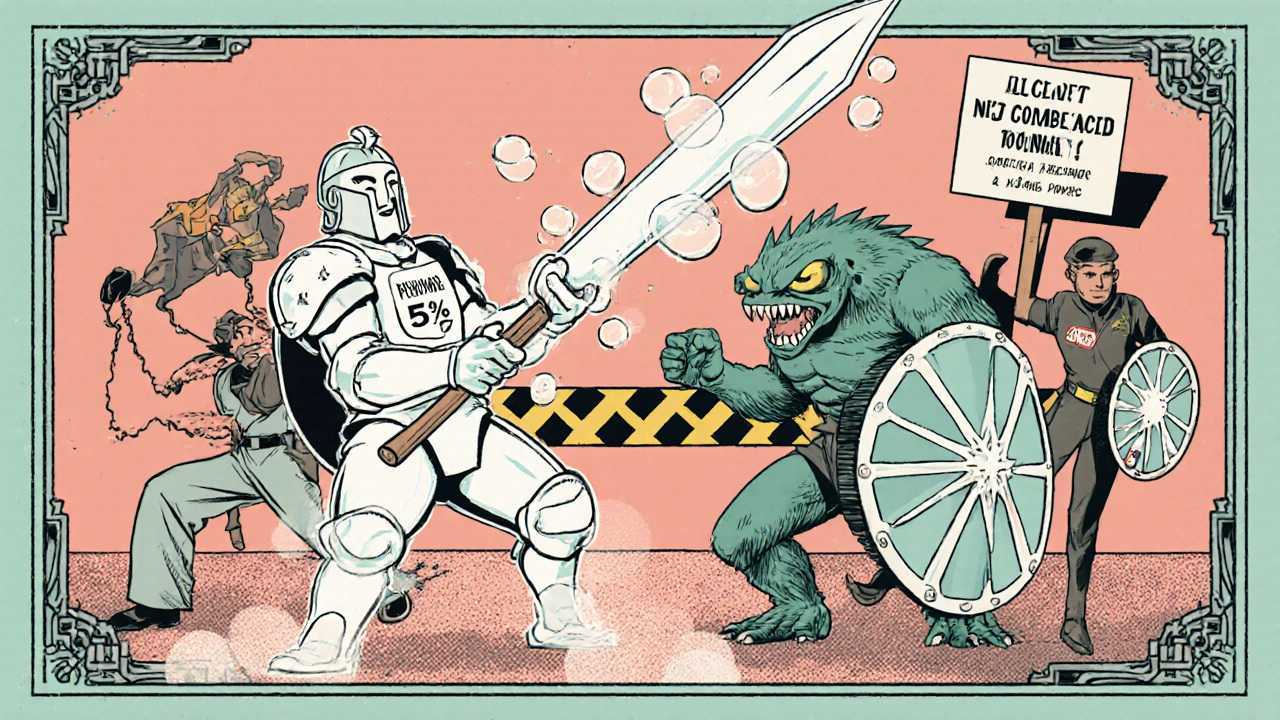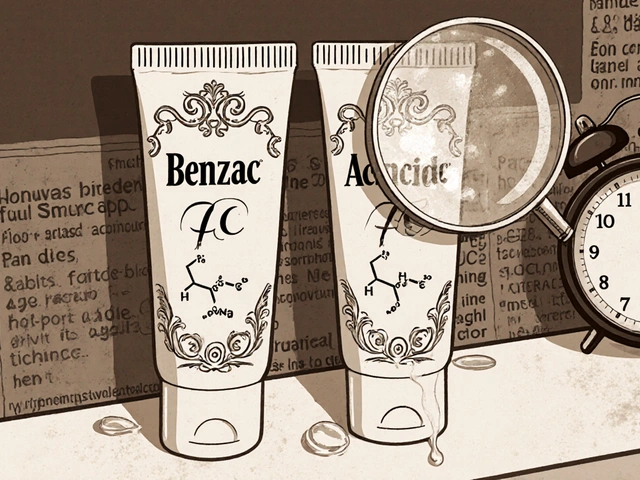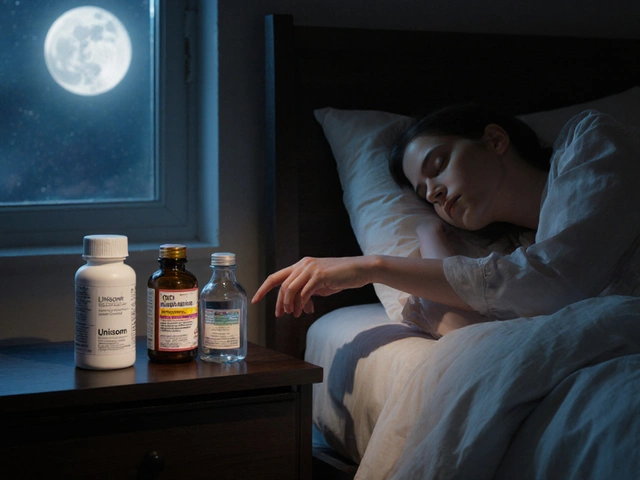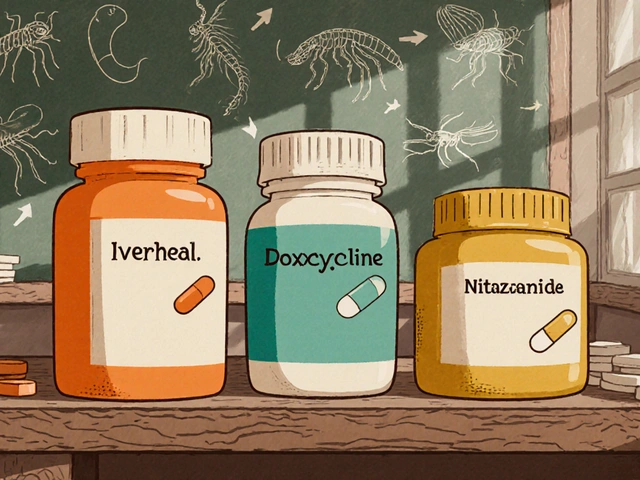Acne Treatment Finder
Find Your Perfect Acne Treatment
Answer a few quick questions about your skin to get personalized recommendations for acne treatments that will work for you.
Recommended Treatment
Acne doesn’t just annoy you-it can make you feel self-conscious, tired, and even anxious. If you’ve tried washing your face more, switching soaps, or using expensive creams that did nothing, you’ve probably landed on Benzac AC Gel. It’s one of the most common acne treatments in the UK, sold over the counter and prescribed by GPs. But is it the best option? And are there better, cheaper, or gentler alternatives out there?
What Benzac AC Gel Actually Does
Benzac AC Gel contains 5% or 10% benzoyl peroxide. That’s not just a chemical name-it’s a proven acne fighter. It kills the bacteria (Cutibacterium acnes) that cause inflamed pimples. It also unclogs pores by breaking down dead skin cells and excess oil. That’s why it works on whiteheads, blackheads, and red, angry pimples.
Most people start seeing results in 4 to 6 weeks. By 12 weeks, many report a 50% reduction in breakouts. That’s not magic-it’s science. A 2023 review in the British Journal of Dermatology confirmed benzoyl peroxide is as effective as topical antibiotics for mild to moderate acne, without the risk of antibiotic resistance.
But here’s the catch: benzoyl peroxide dries out skin. A lot. If you have sensitive skin, you might get redness, peeling, or burning. That’s why some people stop using it-even when it’s working.
Top Alternatives to Benzac AC Gel
You don’t have to stick with Benzac AC if it’s too harsh. Here are the most effective alternatives, backed by real user results and dermatologist recommendations in the UK.
1. Acnecide 5% and 10% Gel
Acnecide is basically the same as Benzac AC-same active ingredient, same concentration, same manufacturer (Leo Pharma). The only difference? Price. Acnecide is often £3-£5 cheaper per tube at pharmacies like Boots or Superdrug. It’s not a different product. It’s the same gel in a different box. If you’re paying more for Benzac, you’re paying for the brand name.
2. Differin Gel (Adapalene 0.1%)
Differin is a retinoid, not a benzoyl peroxide product. That means it works differently. Instead of killing bacteria, it speeds up skin cell turnover, preventing pores from clogging in the first place. It’s gentler on skin than benzoyl peroxide and doesn’t bleach towels or clothes.
Many people with sensitive skin switch to Differin after burning out on Benzac. A 2024 UK patient survey found that 68% of users with red, irritated skin saw improvement with Differin within 8 weeks, compared to 41% who gave up on benzoyl peroxide due to irritation.
Downside? It takes longer to work-up to 12 weeks for full effect. And you can’t use it with benzoyl peroxide at the same time without risking irritation.
3. The Ordinary Niacinamide 10% + Zinc 1%
This isn’t a prescription product, but it’s become a cult favourite in UK skincare communities. Niacinamide reduces inflammation and regulates oil production. Zinc helps calm redness. Together, they’re a gentle, non-drying option.
It won’t kill acne bacteria like benzoyl peroxide, but it’s great for preventing new spots and calming existing ones. Many users combine it with a low-dose benzoyl peroxide product (like 2.5%) to get the best of both worlds. It costs under £7 for a 30ml bottle-far cheaper than Benzac AC.
4. Clindamycin Gel (Prescription Only)
Clindamycin is a topical antibiotic. It’s often prescribed alongside benzoyl peroxide because it reduces bacteria without causing dryness. But here’s the problem: using it alone leads to antibiotic resistance. That’s why GPs in the UK now only prescribe it in combination with benzoyl peroxide-like in the product Dalacin T.
If you’ve been on clindamycin alone and your acne came back worse, that’s why. Don’t use it without benzoyl peroxide. If your GP gives you clindamycin by itself, ask for a combo product instead.
5. Salicylic Acid Cleansers and Toners
Salicylic acid is a beta hydroxy acid that penetrates oil to clear pores. It’s great for blackheads and clogged pores, but less effective on inflamed, pus-filled pimples.
Many people use it as a daily cleanser (like Paula’s Choice 2% BHA) alongside a gentler treatment. It won’t replace benzoyl peroxide for active breakouts, but it’s an excellent support product. It’s also non-bleaching, so you won’t ruin your pillowcases.
Side-by-Side Comparison: Benzac AC vs Alternatives
| Treatment | Active Ingredient | Works On | Time to See Results | Skin Irritation Risk | Cost (30ml, UK) | Bleaches Fabric? |
|---|---|---|---|---|---|---|
| Benzac AC Gel | 5% or 10% Benzoyl Peroxide | Inflamed pimples, whiteheads, blackheads | 4-12 weeks | High | £12-£15 | Yes |
| Acnecide Gel | 5% or 10% Benzoyl Peroxide | Inflamed pimples, whiteheads, blackheads | 4-12 weeks | High | £7-£10 | Yes |
| Differin Gel | 0.1% Adapalene | Blackheads, whiteheads, mild inflammation | 8-16 weeks | Moderate | £14-£18 | No |
| The Ordinary Niacinamide | 10% Niacinamide + 1% Zinc | Redness, oiliness, mild breakouts | 6-12 weeks | Low | £6-£8 | No |
| Dalacin T (Clindamycin + BP) | 1% Clindamycin + 5% Benzoyl Peroxide | Severe inflammatory acne | 4-8 weeks | Moderate | £15-£20 (prescription) | Yes |
| Salicylic Acid Cleanser | 2% Salicylic Acid | Blackheads, clogged pores | 2-6 weeks | Low | £10-£16 | No |

Who Should Use What?
There’s no one-size-fits-all acne treatment. Your skin type, breakouts, and budget matter.
- If you have oily skin with lots of red, swollen pimples → Start with Benzac AC or Acnecide. Use the 5% version first to test tolerance.
- If your skin is sensitive or you get redness easily → Try Differin or The Ordinary Niacinamide. Add a low-dose benzoyl peroxide later if needed.
- If you have mostly blackheads and clogged pores → Use a salicylic acid cleanser daily, plus a retinoid like Differin at night.
- If you’ve tried everything and still have severe acne → Talk to your GP about Dalacin T or oral antibiotics. Don’t wait.
- If you want the cheapest effective option → Acnecide 5% is just as good as Benzac AC and costs half as much.
Common Mistakes People Make
Even when people pick the right treatment, they mess up the application. Here’s what not to do:
- Using too much-A pea-sized amount covers your whole face. More doesn’t mean faster results. It just means more irritation.
- Applying it to wet skin-Pat your face dry first. Wet skin increases absorption and irritation.
- Skipping moisturiser-Yes, even if you’re oily. Use a lightweight, non-comedogenic moisturiser after treatment. Dry skin triggers more oil production.
- Combining too many actives-Don’t layer benzoyl peroxide, retinoids, and salicylic acid together. You’ll burn your skin. Space them out: use BP in the morning, retinoid at night.
- Giving up too soon-Acne treatments take 8-12 weeks. If you stop at 3 weeks, you’ll never know if it works.

What to Do If Your Skin Gets Worse
Sometimes, acne gets worse before it gets better. That’s called purging-it happens when treatments speed up cell turnover and push out clogged pores. Purging usually lasts 2-4 weeks and looks like more small bumps.
But if you get intense redness, burning, swelling, or itching that doesn’t fade after a few days, you’re having a reaction-not purging. Stop the product. Use a simple fragrance-free moisturiser. If it doesn’t improve in 3 days, see a pharmacist or GP.
Also, don’t use benzoyl peroxide if you’re allergic to it. Signs include hives, blistering, or severe swelling. Stop immediately and get medical help.
Final Advice: Start Simple, Then Adjust
Don’t buy every product on the shelf. Start with one treatment. Acnecide 5% is the smartest first move-it’s effective, cheap, and widely available. Use it every other night for the first two weeks. If your skin tolerates it, go nightly.
If you’re still breaking out after 10 weeks, switch to Differin. If your skin is too sensitive for either, try niacinamide and salicylic acid cleanser. And if nothing works, your GP can refer you to a dermatologist. Prescription options like isotretinoin (Roaccutane) are life-changing for severe cases.
Acne isn’t about finding the ‘best’ product. It’s about finding the one that works for you-without wrecking your skin in the process.
Is Benzac AC Gel better than Acnecide?
No, they’re identical in active ingredients and strength. Benzac AC is just more expensive. Acnecide is the same gel made by the same company. Save money and choose Acnecide unless your pharmacy only stocks Benzac.
Can I use Benzac AC Gel with Differin?
Not at the same time. Using both together can cause severe irritation. Use Benzac AC in the morning and Differin at night, or alternate days. If your skin feels tight or red, cut back to every other night.
Does benzoyl peroxide make acne worse before it gets better?
Sometimes. In the first 2-4 weeks, you might see more spots. This is called purging-it means the treatment is working and pushing out clogged pores. If redness, swelling, or pain lasts longer than 4 weeks, stop using it and consult a professional.
How long does a tube of Benzac AC Gel last?
A 30ml tube lasts 6-8 weeks if you use a pea-sized amount for your whole face every night. If you use too much, it’ll run out in 3-4 weeks. Always check the expiry date-benzoyl peroxide loses effectiveness after 3 months of opening.
Can I buy benzoyl peroxide over the counter in the UK?
Yes. Benzoyl peroxide gels and washes in 5% and 10% strengths are available without a prescription at Boots, Superdrug, and pharmacies. Higher strengths or combination products (like with clindamycin) require a prescription.






